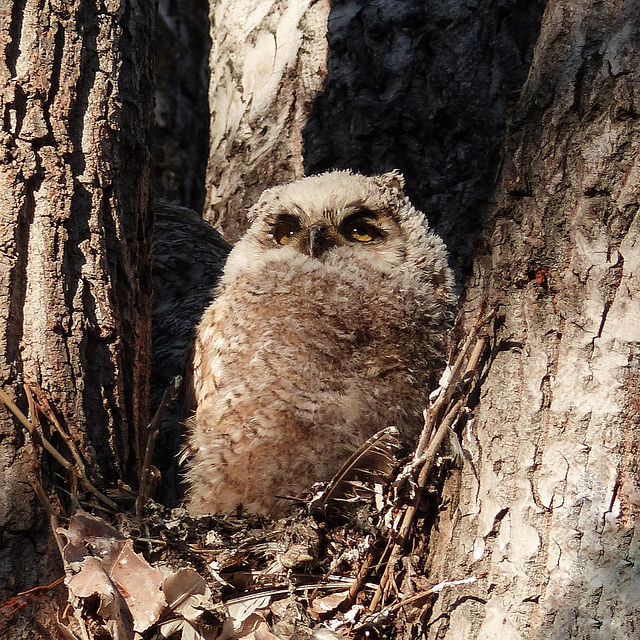Ruddy Duck in choppy waters
Fields of golden stubble
Button-eyes
Classic beauty - 53 Buick
Catkins
Look, Mom, I can fly!
Invasion of the Midges!
Baby Larch cone
On golden pond
Black-necked Stilt
Wild Gooseberry
A good start to yesterday
American Avocet
Sharp-tailed Grouse
A welcome splash of red
Old Puffballs
Brewer's Blackbird
The joy of spring
Moose, with a bad case of ticks
Beautiful Hellebore
The elegant American Avocet
Blossom
Canada Buffaloberry / Shepherdia canadensis
Monkeyflower / Mimulus
The art of building a nest
Malachite butterfly on blue
Curious Mule Deer
Northern Pygmy-owl from January
A touch of blue
Cinnamon Teal
Head to head
Grebes with the red "button" eyes
A fine day for birding
Little more than black silhouettes
Adventurous little owlet
Western Meadowlark
American Coot
Pine Coulee Reservoir, November 2013
Male Sharp-tailed Grouse
Red wagon by Bow Valley Ranch
Long-tailed Weasel
Deep inside a dark barn
Clouds over a prairie farm
Sharp-tailed Grouse
Balsam or Hybrid Poplar catkins
See also...
Keywords
Authorizations, license
-
Visible by: Everyone -
All rights reserved
-
179 visits
Yellow, glassy eyes


Just over two weeks ago, on 15 April 2015, my parking lot was going to be spring-cleaned, which meant that all cars had to be out of the lot by 7:30 am. I don't have a 2015 street parking permit, so I had to leave home at 7:30 and find something that would use up the few hours before my volunteer shift. I didn't want to risk being late for that, so decided to stay within the city rather than go driving some backroads.
The owls in Fish Creek Park ended up being my destination. I had only been there twice in many weeks, seeing Mom on my first visit and then Mom with two of her three owlets on the second. When I arrived early morning on 15 April, there was no sign of the "paparazzi" - I had been expecting there to be at least a few photographers and people out for a walk. Maybe the 10-minute viewing limit has had some effect : ) This time, I was able to see all three owlets as well as Mom and Dad. Can't remember which owlet this one was, but it was just the cutest bundle of fluff. Late afternoon, after my volunteer shift, I called in again for a short while on my way home. It has been five days since I last called in, so I'm sure there have been changes.
"With its long, earlike tufts, intimidating yellow-eyed stare, and deep hooting voice, the Great Horned Owl is the quintessential owl of storybooks. This powerful predator can take down birds and mammals even larger than itself, but it also dines on daintier fare such as tiny scorpions, mice, and frogs. It’s one of the most common owls in North America, equally at home in deserts, wetlands, forests, grasslands, backyards, cities, and almost any other semi-open habitat between the Arctic and the tropics.
Great Horned Owls are nocturnal. You may see them at dusk sitting on fence posts or tree limbs at the edges of open areas, or flying across roads or fields with stiff, deep beats of their rounded wings. Their call is a deep, stuttering series of four to five hoots." From AllAboutBirds.
www.allaboutbirds.org/guide/Great_Horned_Owl/id
en.wikipedia.org/wiki/Great_horned_owl
The owls in Fish Creek Park ended up being my destination. I had only been there twice in many weeks, seeing Mom on my first visit and then Mom with two of her three owlets on the second. When I arrived early morning on 15 April, there was no sign of the "paparazzi" - I had been expecting there to be at least a few photographers and people out for a walk. Maybe the 10-minute viewing limit has had some effect : ) This time, I was able to see all three owlets as well as Mom and Dad. Can't remember which owlet this one was, but it was just the cutest bundle of fluff. Late afternoon, after my volunteer shift, I called in again for a short while on my way home. It has been five days since I last called in, so I'm sure there have been changes.
"With its long, earlike tufts, intimidating yellow-eyed stare, and deep hooting voice, the Great Horned Owl is the quintessential owl of storybooks. This powerful predator can take down birds and mammals even larger than itself, but it also dines on daintier fare such as tiny scorpions, mice, and frogs. It’s one of the most common owls in North America, equally at home in deserts, wetlands, forests, grasslands, backyards, cities, and almost any other semi-open habitat between the Arctic and the tropics.
Great Horned Owls are nocturnal. You may see them at dusk sitting on fence posts or tree limbs at the edges of open areas, or flying across roads or fields with stiff, deep beats of their rounded wings. Their call is a deep, stuttering series of four to five hoots." From AllAboutBirds.
www.allaboutbirds.org/guide/Great_Horned_Owl/id
en.wikipedia.org/wiki/Great_horned_owl
- Keyboard shortcuts:
Jump to top
RSS feed- Latest comments - Subscribe to the comment feeds of this photo
- ipernity © 2007-2024
- Help & Contact
|
Club news
|
About ipernity
|
History |
ipernity Club & Prices |
Guide of good conduct
Donate | Group guidelines | Privacy policy | Terms of use | Statutes | In memoria -
Facebook
Twitter

Sign-in to write a comment.